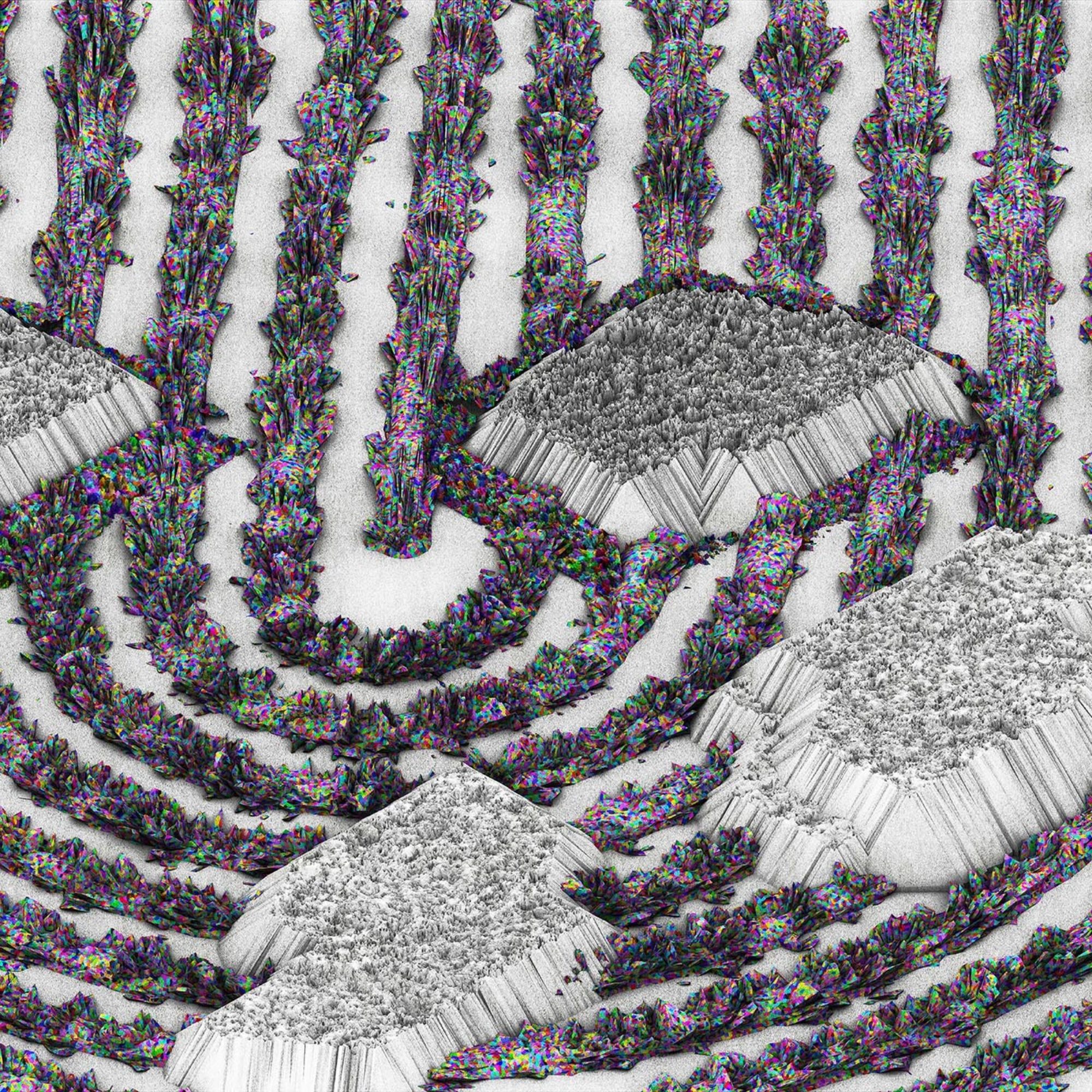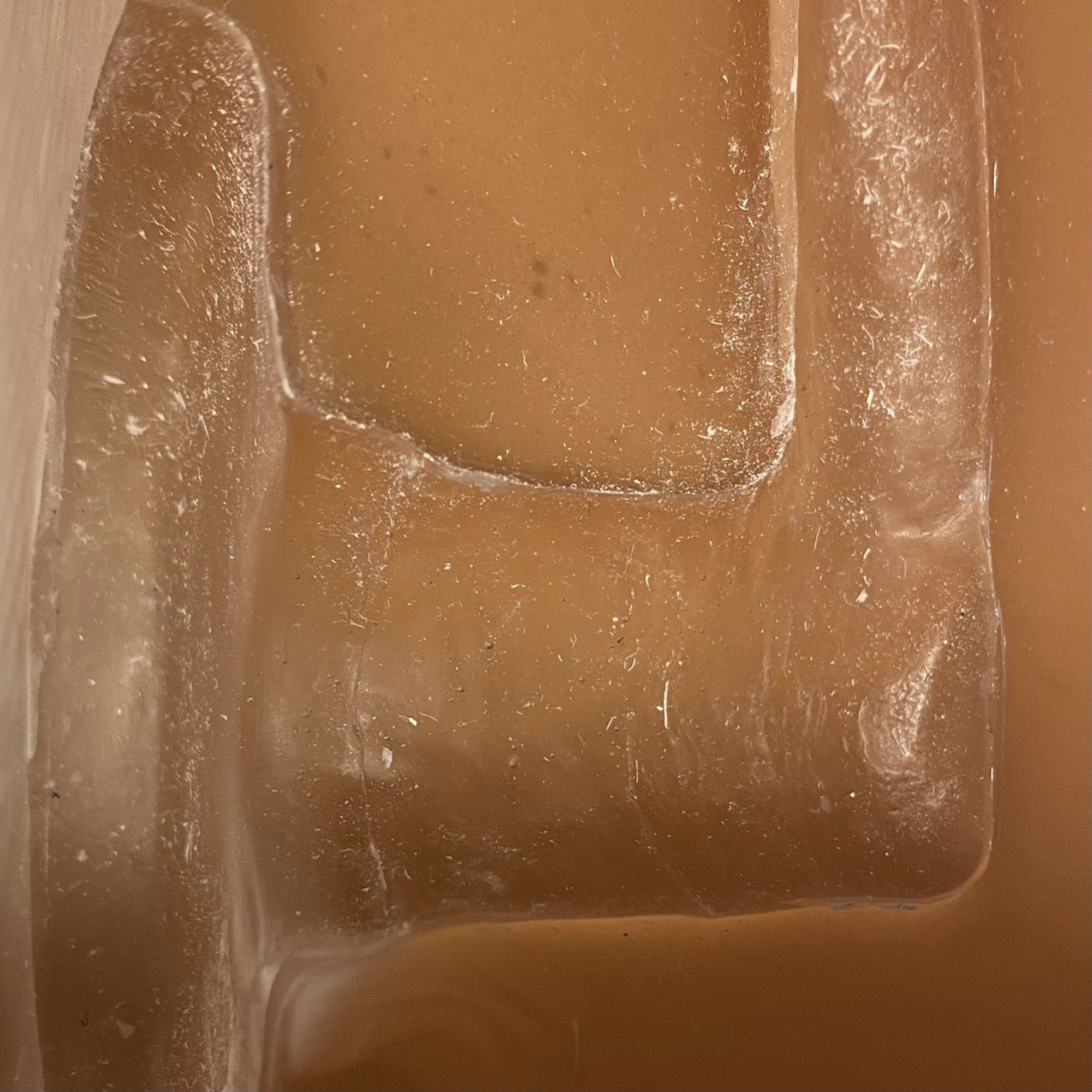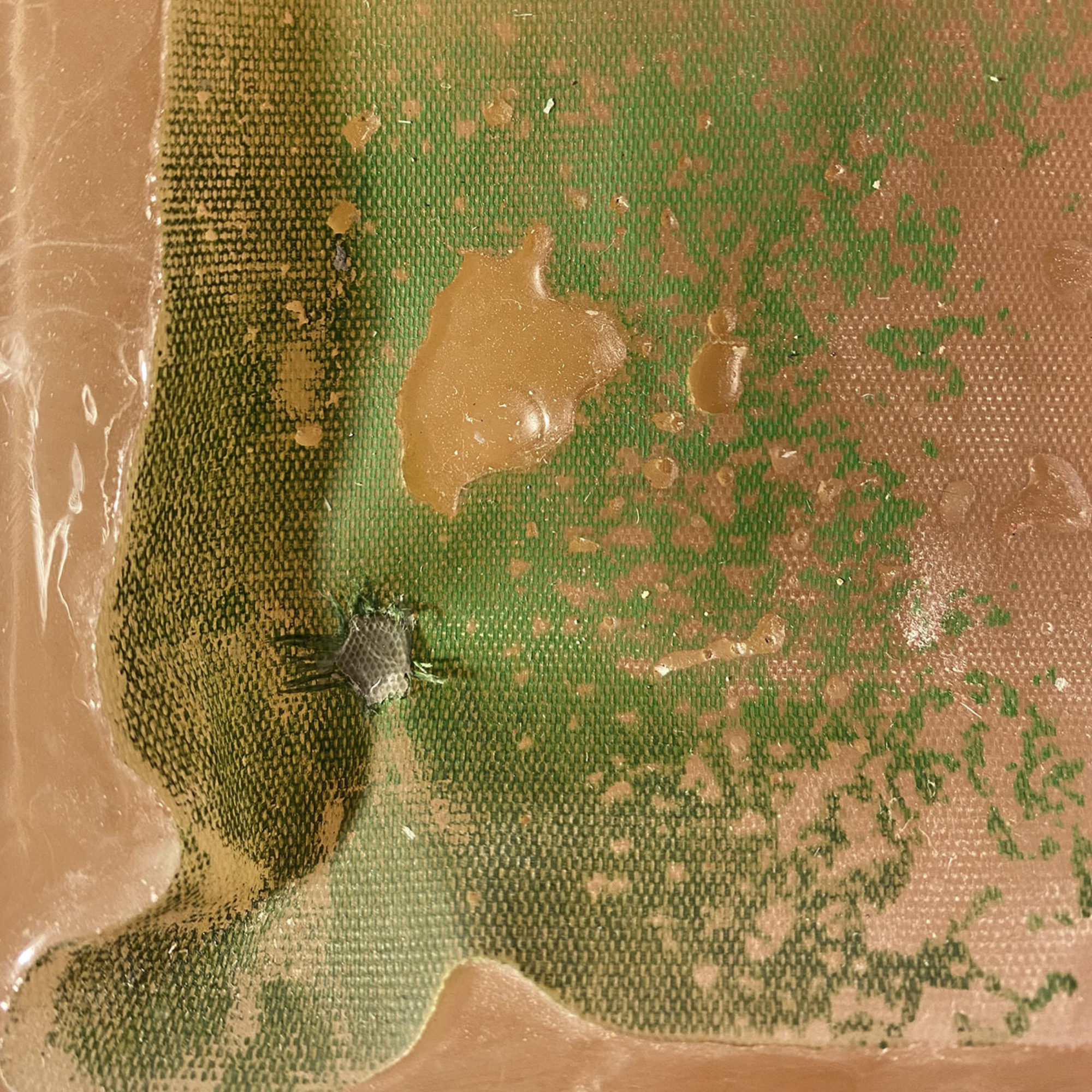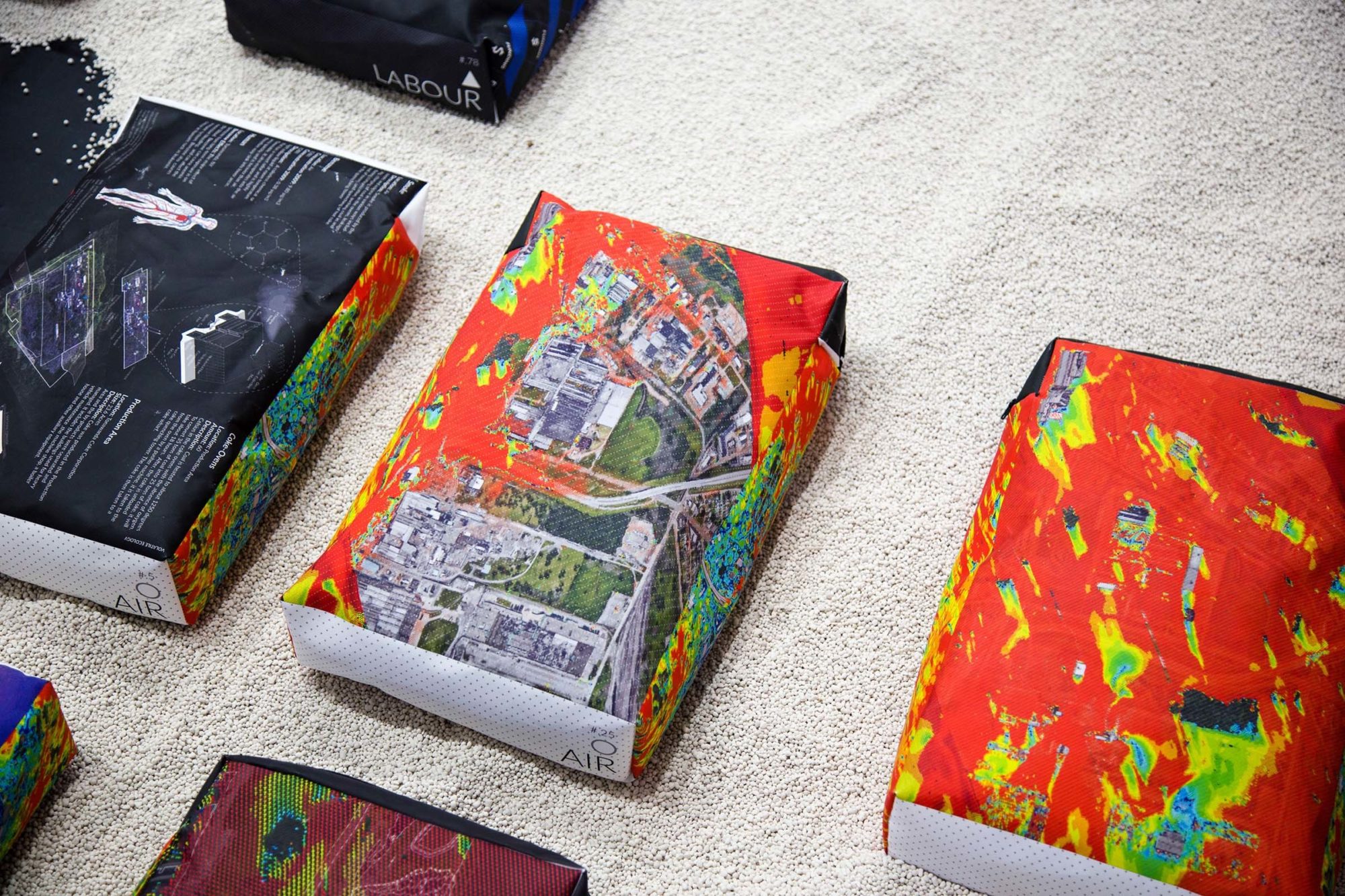- Exhibition
On the Inside with You
Nerea Feliz, Zherui Wang
06 Dec–28 Feb 2022

Image from Interior Landscapes, 2021, Nerea Feliz
“In the world’s densest cities,” wrote Nicola Twiley in the New York Times in 2018, “the indoor biome is bigger than the outdoor space, at least in terms of floor area.” Indoor Manhattan, as ecologist Rob Dunn notes in the same article, exceeds outdoor Manhattan by a factor of three to one.
Architecture was long framed as a practice of negotiating relationships between indoor and outdoor space. The invention of environmental systems, such as artificial lighting, heating and air-conditioning, and humidity control, made possible a sense of the architectural interior as an idealized version of the natural world, even as they reduced the distance between those conditions to the thickness of a pane of glass.
But those technologies were also transforming the outside in ways less noticed until recently but now widely recognized. Particles in the air accelerate climate change, light pollution disrupts natural systems, and plastic pervades the oceans. No region of Earth can still be considered outside of human intervention. The outside has become an interiority within which we are all trapped. We recognize that we can no longer extract resources endlessly from, nor dispose waste endlessly into, a seemingly boundless exterior. That is the fallacy on which systems like air-conditioning still rely: the idea that we could push heat outside without affecting the outside, as if the game were not zero sum, when it so clearly is. We are instead just pushing a limited amount of stuff around our world-interiority.
The exterior realm has become a troubled extension of our interior world, and therefore the relational function of architecture must be fundamentally reimagined in terms of nested relationships between and among spaces without an outside. How might those relationships be negotiated? The dynamics of closed systems in ecology, post-capitalism in economy, non-anthroponormativism, and planetary kinship in anthropology surely offer guidance. Feminist theorist Donna Haraway summarizes these in a process she calls sympoieis: the “making-with” that occurs between cooperating species.
This is the totalizing project of interior landscapes, in which all making is making-with all humanity and all nature. On the Inside with You looks for hints of making-with while making-do, for emerging cultures that model alternative futures, bridge differences, and address Haraway’s challenge that we become “less deadly, more response-able, more attuned, more capable of surprise, more able to practice the arts of living and dying well in multispecies symbiosis, sympoieisis, and symanimagenesis on a damaged planet.


Image from Interior Landscapes, 2021, Nerea Feliz
Nerea Feliz: Interior Landscapes
While we primarily think of domestic space as occupied by humans, interiors are in fact home to an astonishing multiplicity of life forms: up to 12 types of mammals, 1,000 insects, 51,965 fungi types, and 97,800 bacteria, according to the “Wild Life of our Homes” by The Public Science Lab. Coming out of the pandemic, after a prolonged housebound period marked by obsessive thoughts about microbial life, this study's comprehensive data collection of the microbial communities found in a number of domestic locations inspired a series of drawings. We cast five common household elements in bio-based epoxy and portrayed and portrayed them through representations at the microscale. At twenty-five-thousandths of an inch scale, the edges of conventional objects are blurred to a state of constant disintegration in minuscule fragments and the traditional semiotics of the domestic become unfamiliar yet bountiful landscapes populated with microbial organisms and particles such as pollen grains, fungi, bacteria, tardigrades, face mites, human hair and skin flakes.
Interior Landscapes completed with Alex Gagle (drawings) and Samantha Panger (casts). Data for interior Landscapes provided courtesy of Rob R. Dunn, Reynolds Professor, Department of Applied Ecology, North Carolina State University

Volatile Ecologies, Zherui Wang
Zherui Wang: Volatile Ecologies
In the Anthropocene era, primeval elements have been increasingly a point of political contention. Toxic air, corrosive soil, black water, and environmental violence have been mediated with different degrees of consistency and success in policymaking. If public policies alone can’t resolve the crisis, it rests upon human capital to confront environmental change through the agency of design to extend human survival.
Volatile Ecologies is a design expedition examining the environmental degradation in the industrial waterfront of Buffalo, New York, through the lens of scenario planning and prototype making. Since their use in the 1910s, these sites have been contaminated for decades with oil spills, benzene run-offs, coal tars, ammonia liquors, wastewater, and toxic airborne emissions. Bringing together design thinking, technology, and material culture, the exhibition depicts an alternative future of the heavily polluted environment through design apparatuses and speculative drawings. With each viewing from the perspective of air, earth, and water, the apparatuses and the world they inhabit explore ideas of reparation, production, and cohabitation across spatial and temporal scales. From an air filtrating wearable to a pneumatic parasite, sentient landscape machinery to new urban surfaces, the prototypes offer material evidence and suggest the results of changing working relationships between artists, architects, designers, engineers, scientists, politicians, and other stakeholders. As visitors traverse through this exhibition, they will discover and explore narrative, practices, and aesthetics — technically informed and materially substantiated.
Nerea Feliz is associate professor at the School of Architecture at the University of Texas at Austin. Nerea Feliz’s research encompasses scholarly and creative activities that are linked forming a cohesive body of work with a sustained focus on public interiority. Situated at the intersection of architecture, interior design and interior urbanism, her work explores interior design’s role as a mediator between us and the spaces we occupy.
Zherui Wang is a designer and researcher based in Brooklyn, NY. His work explores the interplay between architecture and environmentalism through design, research and making. His design projects have been featured at the V&A Gallery Design Society in Shenzhen, and exhibited in New York, and Toronto. Currently, Wang is conducting his doctoral work at the University of Pennsylvania.